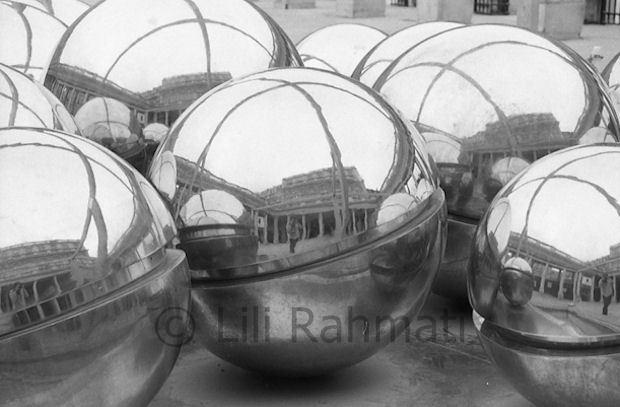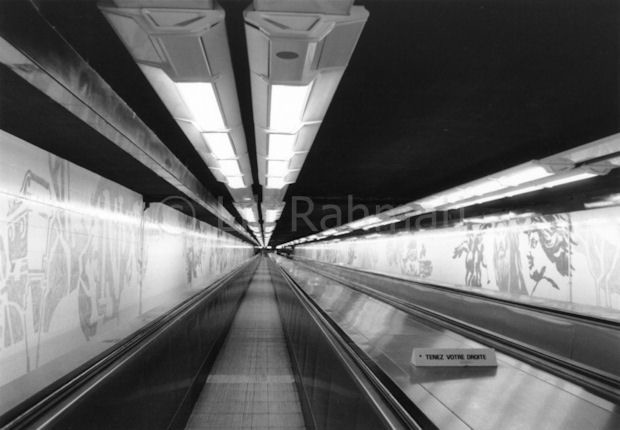Photography came into my life almost three years ago when I was in dire need of some form of true self-expression especially given the demands of my career at an LA area investment firm.
Even though I could check the box on many items that are desirable in life, I couldn’t help but feel as though I wasn’t living up to my full potential.
I felt that something was truly missing. Not able to define what that missing component was and with no idea where to start looking I just carried on with the status quo.
As the saying goes the best things in life often happen when one least expects them and that’s true in my case. During a random visit to the campus of an LA area art College with a friend I casually skimmed through the course catalog and decided I wanted to enroll in a weekend class: “Intro to B&W Film Photography”.

I’d always been an admirer of B&W photography especially of the images created by masters like Brassai and Doisneau. Since I’m quantitatively oriented I was eager to learn the technique behind image creation: the manipulation of the laws of physics with my camera as well as the tactile experience of printing my own images in the darkroom.
What started out as a whim quickly evolved into a creative passion. From the moment that I dropped the paper in the developer, I was hooked. Especially when you’re first starting out, there’s a huge adrenaline rush while you wait for those initial hints of an image to appear.
This is not to say that my early experience with printing lacked challenges. It took a long time and lots of practice to become a “good” printer. What kept me going was the knowledge that I was capable of doing better as well as the constant stream of helpful photographers of all levels who were willing to help, give advice, share their knowledge, etc.

So why do I embrace analog at a time when nearly everything is digital? The experience of B&W shooting and darkroom printing helps me appreciate my natural capabilities as a person, an analog being. There’s something really awesome about knowing that you can’t go back, click a button and “fix” a bad image. If you shoot a bad roll, you have to do it again.
I happen to like this because it makes me try harder to be better and work to get it right. As far as printing, that’s really an art form all on its own. It takes time to develop good darkroom printing skills which once obtained result in a feeling unsurpassed by any other.
The whole process of being in the darkroom is entirely creative and zen-like spiritual because it’s free from the distractions of daily life. In the darkroom there’s no place for the Blackberry or iPhone. During that finite period of time spent in the darkroom nothing else is really that important-calls can go to voicemail, emails can wait.
You’re entirely at one with your humanness fully able to explore your creative potential.
For anyone who’s never tried film photography and darkroom printing, I highly recommend it. I hope the experience is for you what it has been for me: a truly transformative journey full of constant learning and insight which has led to fulfillment as well as a great deal of self-discovery along the way.
By Lili Rahmati
Links:
http://argenticvision.com/
http://argenticvision.tumblr.com/
http://twitter.com/ArgenticVision
http://www.facebook.com/ArgenticVision
http://www.flickr.com/photos/argenticvision/sets
I am in total agreement – I am a “dinosaur” in a modern world – my film
camera is the best part of my life. Yes its a little cumbersome, you can’t always just point and shoot, hoping for a good shot. Thought, careful setups, and being in the right frame of mind, so to speak, all contribute to making me a more considerate and eco conscious person. I cull photos I don’t like, keeping perhaps two or three out of 24. But hey, I don’t smoke or drink much, so my vice is film.
Keep up the good work, I have B&W film, but haven’t a clue where to start, or what I am searching for yet. Keeps me going.
I started out with film and have only recently ventured into digital and I’ll have to admit: it’s a serious love affair. I can’t say I “returned” to film but rather have added it back in. For what film gives as an experience and in result. Both have aspects of satori in that being “in the zone” comes from the act and art of making and creating regardless of medium, but the medium carries its own unique stamp and feeling. Bravo for reaching and testing your abilities.
Your post reminded me of my first year as a photography student. I loved printing so much I skipped all of my other classes periodically just to print from when the darkroom openned and closed. I wasn’t behind on any of my projects. I just loved the process so much at the time. I now wish I could afford my own darkroom set up so I could try out diverse types of printing methods.
Fantastic story, Lili. I love this quote: ” There’s something really awesome about knowing that you can’t go back, click a button and “fix” a bad image. If you shoot a bad roll, you have to do it again.
I happen to like this because it makes me try harder to be better and work to get it right.”
I’ve just started shooting black and white film with an old Nikon camera from the early seventies. So far I’ve found that it makes me a more thoughtful photographer. And I seem to come home with a greater percentage of shots that I’m happy with.
I’m developing the negatives at home with a film changing bag, but haven’t the space for a darkroom to develop prints. I love that that moment with my arms buried in a changing bag that I seem to struggle a bit getting the film loaded. It’s like, “Don’t panic. You HAVE to load this. There is no do over or you lose this roll.” Makes the art of photography more precious.
My digital camera is getting a little dusty now that I have the old Nikon. 🙂
What a great story, Lili!
So true about knowing you can’t go back. It does seem weird to me, having started on film photography, to stand and and take 30 shots of one subject If ONE shot turns out OK, it’s not a big deal compared to film.
There is nothing like getting lost in our photography and forgetting our day-to-day worlds, even when sometimes awful or stressful things are happening in our lives. I can just picture, then, what you mean about what it’s like being in the darkroom. You get to escape when you’re out shooting and when developing.
One would never know, from looking at your images, that you only got into photography less than three years ago AND that you’re able to develop your prints so skillfully. Congrats!
Thanks to each and every one of you for taking the time to post a comment in response to my post.
I appreciate so much all of your insights, feedback, encouragement, kind words, etc.
It’s wonderful to be in your company and I feel inspired and humbled by the sense of camaraderie and genuine warmth expressed here thus far today.
Looking forward to staying connected with you,
Lili[img]http://www.flickr.com/photos/argenticvision/4542034795/[/img]
Great story! Sometimes its hard to ‘get away’ from the constraints of life but I found too, photography, is the best way out of it! Working in the financial sector can be mundane and repetitive but when I take on my camera it’s like that side of my life never existed.
I love your pictures here. I can’t imagine what kind of pictures you would be taking when you pick up a digital camera! I would love to delve into film photography one day, just to experience the whole dark room factor. The way you put it, it’s almost transcendant!
Thanks for sharing, hope to see more of your work.
There are some things that analog can do that digital can only dream of. One in particular is pinhole photography. While difficult, the idea of manipulating the surface the light is destined to hit simply by how you place a slip of paper can never really be done with digital.
Two years ago I built an 8 foot pinhole camera to experiment with height and perspective. I could never have done that with digital.